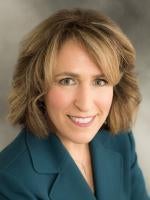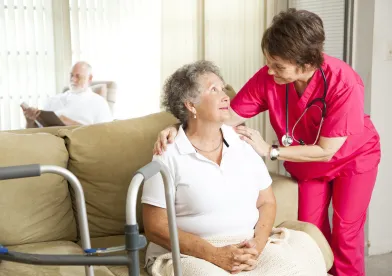The rapid spread of the COVID-19 pandemic has led to a growing awareness of systemic disparities across the United States, from small business support to healthcare access. One especially troubling issue centers on care for a particularly vulnerable population: elderly Americans living in assisted care facilities.
Across the country, residents and workers alike have been exposed to – and infected by – coronavirus at significant rates.
Indeed, one of the first vectors for COVID-19 was at a Life Care Center nursing home in Kent, Washington, which saw 32 deaths related to the disease. Since then, there have been more troubling stories in the news about poor quality of care; states releasing recovering residents back to nursing homes; and numerous outbreaks.
Although the rapid pace of COVID-19 makes it challenging to compile data, a recent report by the New York Times states that 10,000 residents and staff members in nursing homes in 23 states are currently reporting fatality data, according to the Kaiser Family Foundation.
The fact that COVID-19 targets individuals over the age of 65 and older is well documented at this time. However, the reasons for these high rates of infection and mortality shouldn’t be attributed to just the higher risk factors for elderly individuals. Living and working conditions at nursing homes and other care facilities contribute to an environment that has facilitated the spread of the dangerously transmittable coronavirus.
“It’s really beyond the worst-case scenarios that I think anyone could reasonably prepare for,” said Mark Parkinson, president and chief executive of the American Health Care Association and the National Center for Assisted Living.
Inadequate Staffing
Understaffing is a chronic problem in nursing homes. Under federal law, Medicare and Medicaid-certified nursing homes must have a registered nurse (RN) on duty at least 8 hours a day, 7 days a week; and a licensed nurse (RN or LPN) on duty 24 hours a day.
However, the most important marks of quality-of-care are minimum staffing levels and staff-to-patient ratios. At the federal level, this doesn’t exist, with guidance only stating that nursing homes are required “to provide sufficient staff and services to attain or maintain the highest possible level of physical, mental, and psychosocial well-being of each resident.”
Staffing provides the foundation for care at nursing homes. When staffing is insufficient, it creates a cascade of problems, starting with stressed care providers. Even the most dedicated workers struggle to do their job when overwhelmed. The decrease in quality-of-care can have serious consequences:
- Physical, verbal, and emotional abuse of patients
- Patient neglect that leads to injuries, malnutrition, and poor physical care
- Poor management of both chronic and newly acquired medical conditions
- Inadequate cleaning and maintenance of living spaces
Health issues stemming from the quality of care in nursing homes have been documented as a significant health threat to residents. Already, approximately 380,000 people in care facilities die each year from infections, according to the Centers for Disease Control and Prevention. The implications for this during a pandemic are even more serious.
Staffing issues are magnified by low pay and lack of benefits like healthcare and paid time off. These factors led to high turnover prior to the pandemic, but now create even more challenging dilemmas for workers facing exposure to the disease with little employer support available.
There is a strong correlation between facility ownership and the quality of working and living conditions at nursing homes. Approximately 70% of nursing homes are for-profit facilities. For-profit facilities tend to have the least favorable staff-to-patient ratios, which leads to a lower quality of care than in nonprofit and publicly owned facilities.
Poorly Equipped for a Pandemic
Nursing homes don’t just struggle with staffing. They also don’t always have the appropriate equipment to protect their workers and residents. Personal protective equipment (PPE) has been one of the major issues facing healthcare workers over the last six weeks. Basic gear such as face masks, gloves, eye protection, and gowns have been in short supply across the entire country.
Nursing homes provide on-site medical care, unlike hospitals, they don’t typically stock large quantities of specialized medical equipment. As COVID-19 has drained the healthcare system’s resources, facilities have found themselves last in line to obtain essential-but-scarce personal protective equipment (PPE) like face masks.
At the end of April, FEMA pledged to send out lots of PPE, including surgical masks, gloves, eye protection, and gowns over the next two months to Medicare and Medicaid-certified nursing homes. However, advocates for nursing homes say that won’t be enough.
“Nursing homes — and all aging service providers — are in dire need of PPE now. If it came today — which it won’t — it is already more than two months overdue and seriously insufficient,” commented Katie Smith Sloan, president and CEO of LeadingAge, the association of nonprofit aging services providers.



 />i
/>i

